Business
Special goods and services tax: Issues and concerns
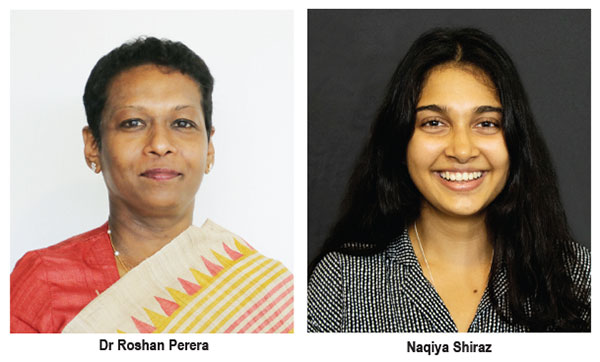
By Dr Roshan Perera & Naqiya Shiraz
The new bill titled ‘Special Goods and Services Tax’ was published by gazette dated 07 January 2022.1 The Special Goods and Services Tax (SGST) was originally proposed in Budget speech 2021 but was not implemented. It has once again been presented in Budget 2022. The SGST aims to consolidate taxes on manufacturing and importing cigarettes, liquor, vehicles and assembly parts, while also consolidating taxes on telecommunication and betting and gaming (see table 1 for existing taxes on these products and table 2 for taxes consolidated into the SGST as per the schedule in the gazette). The rationale for this new tax as per the bill is “…to promote self-compliance in the payment of taxes in order to ensure greater efficiency in relation to the collection and administration on such taxes by avoiding the complexities associated with the application and administration of a multiple tax regime on specified goods and services.”
Given the multiplicity of taxes and the complexity of the current tax system as a whole, rationalising taxes is necessary to improve collection. However, whether the proposed SGST simplifies the tax system, while ensuring revenue neutrality or even improving revenue collection, needs to be carefully examined.
The SGST Bill is silent on the treatment of the existing VAT on these goods and services. However, according to the Value Added Tax (Amendment) Bill also gazetted on 07 January 2022,1 liquor, cigarettes and motor vehicles will be exempted from VAT while telecommunications and betting and gaming services will still be subject to VAT.
While the gazetted Bill sets out some of the features of the proposed SGST there are many important areas not covered in the Bill. These are expected to be gazetted as and when required by the Minister in charge.
Issues & Concerns
The motivation behind SGST is the simplification of the tax system. Although the objective of introducing the SGST is to improve efficiency by reducing the complexity of the tax system there are many issues and concerns with this proposed tax.
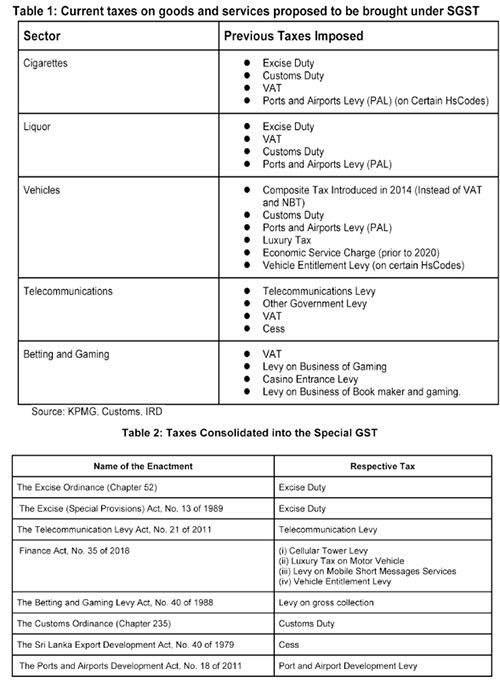
Revenue
Tax revenue which was 13% of GDP in 2010, declined to 8% in 2020. Ad hoc policy changes and weak administration contributed to the decline in tax revenue collection. This continuous decline in tax revenue has led to widening fiscal deficits and increasing debt. One of the main reasons for the current macroeconomic crisis is low tax revenue collection. Hence, any change to the existing tax system should be with the primary objective of raising more revenue.
According to the budget speech the SGST is estimated to bring in an additional Rs. 50 billion in revenue in 2022.1 Revenue from taxes proposed to be consolidated under the SGST has significantly declined over the past 3 years. Given the already difficult macroeconomic environment, along with ad hoc tax policy changes raising the additional revenue estimated at Rs. 50 billion seems a difficult task.
Tax Base and Rate
For the SGST to raise taxes in excess of what is already being collected through the existing taxes, the rate and the base for the SGST needs to be carefully and methodically calculated. Further, the existing taxes have different bases of taxation. For instance the basis of taxation of motor vehicles is both on an ad valorem1 basis and a quantity basis while the basis of taxation of cigarettes and liquor is quantity.2 In light of this, the basis of taxation on which SGST isapplied becomes an issue. Having different bases and different rates for various goods and services would complicate the implementation of the tax These issues need to be carefully considered to ensure the new tax is revenue neutral or be able to enhance revenue collection.
Efficiency
One possible revenue benefit of this proposal is the inability to claim input tax credits on the sectors exempted from VAT. However, the issue is the cascading effect that would result where there would be a tax on tax with the end consumer paying taxes on already paid taxes. If the idea was to raise additional revenue by limiting tax credits, it would have been simpler to raise the tax rates on the existing taxes rather than introduce a new tax.
4. Administration
According to the bill, SGST will now be collected through a new unit set up under the General Treasury where a Designated Officer (DO) will be in charge of the administration, collection and accountability of the tax. The existing revenue collection agencies, such as the Inland Revenue Department (IRD) or the Excise Department will not be primarily responsible for the collection of this tax. By removing the IRD and Excise Department, a parallel bureaucracy will be created, at a time when public spending needs to be carefully managed. The General Treasury also has no previous experience and expertise in direct revenue collection. Weak administration is one of the key reasons for the low tax collection and success of this tax would depend on the strength of its administration.

In addition to the above mentioned concerns, as per the Bill the minister in charge of the SGST has been vested with the power to set the rates, the base and grant exemptions. Accordingly, Parliamentary oversight over fiscal matters is weakened under this proposed Bill.
It could also lead to a time lag between the gazetting and implementing of changes to the SGST (such as the rate, base etc) and obtaining Parliamentary approval for those changes.
Dispute resolution
The SGST Bill also focuses on the dispute resolution mechanism. Under the present tax system, with the enactment of the Tax Appeals Commission Act, No. 23 in 2011 the Tax Appeals Commission has the “responsibility of hearing all appeals in respect of matters relating to imposition of any tax, levy or duty”.1 The most recent amendment to the Tax Appeal
Commissions act (2013)1 seeks to address the large number (495) of cases pending before the Tax Appeals Commision2 by increasing the number of panels to hear the appeals.
Under the proposed SGST disputes will be handled through the court of appeal. However, the time period by which specific actions need to be taken is not provided in the bill. In addition, disputes have to be taken to the court of appeal. Hence, the entire process will be more time consuming. This could result in revenue lags and difficulties in revenue estimation until disputes are resolved.
Additionally, in the case that no valid appeal has been lodged within 14 days, any remaining payments would be considered to be in default. Thereafter, the responsibility is shifted to the Commissioner General of the IRD to recover the dues. Given the IRD is completely removed from the normal collection process, the rationale for bringing defaults under the IRD is not clear.
III. Policy Recommendations
As discussed, the SGST Bill has several limitations and much of this is due to the ambiguities in the Bill.
If the tax is implemented, the rate and basis of taxation needs to be revenue neutral to ensure tax collection is maximised and administrative costs minimised.
The rates, basis of taxation, exemptions etc should be specified in the Bill, as done in most other Acts. This would avoid the power for discretionary changes to the tax being placed in the hands of the minister in charge.
Given the already weak tax administration, it would be more sensible to strengthen the existing revenue collecting agencies and address the weaknesses in the existing system without creating a parallel bureaucracy.
In the case where VAT is consolidated into the proposed GST, the issue of cascading effect of input tax credits needs to be addressed. This is relevant particularly in the case of capital expenditure.
Given the critical state of revenue collection in the country the question to ask is whether this is the best time to introduce a new tax. Focus should be on fixing issues in the existing tax system to ensure revenue is maximised. The VAT is the least distortionary tax and it is the easiest to administer. Given these features it can be a very efficient revenue generator for a country. Therefore instead of introducing a new tax, capitalising on systems that are already in place and amending the VAT rate, threshold and exemptions may be a more practical solution to the revenue problem that the country is currently facing.
Dr. Roshan Perera is a Senior Research Fellow at the Advocata Institute and the former Director of the Central Bank of Sri Lanka.
Naqiya Shiraz is a Research Analyst at the Advocata Institute.
The opinions expressed are the author’s own views. They may not necessarily reflect the views of the Advocata Institute, or anyone affiliated with the institute.
Business
Janashakthi Life records over LKR 5 billion in profits for second consecutive year
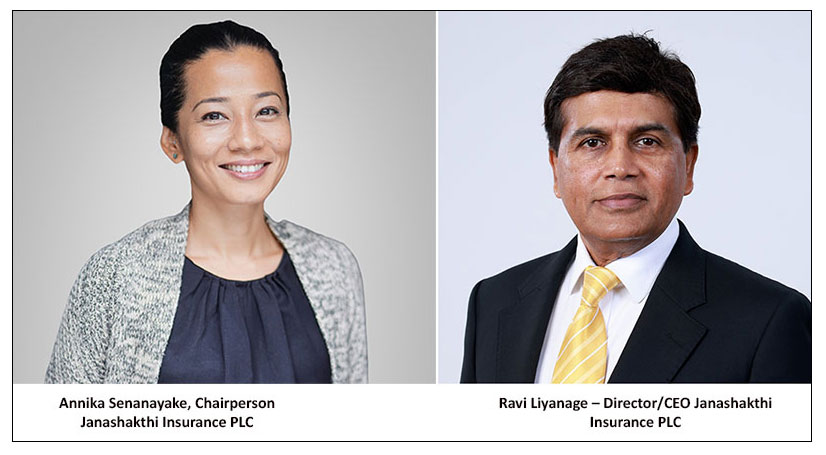
Janashakthi Life, one of the fastest growing Life insurers in Sri Lanka has recorded a massive LKR 5.7 Billion Profit Before Tax for the period under review. This is the second consecutive year the company has surpassed the LKR 5 billion mark in PBT.
Reflecting on the company’s achievements, Ravi Liyanage, Director / CEO of Janashakthi Insurance PLC, said, “Our strong financial performance in 2024 is a testament to our strategic focus, operational excellence, and steadfast commitment to serving our policyholders. Despite market uncertainties, we have continued to grow, delivering exceptional value to our policyholders and all the stakeholders. Our exponential growth trajectory was double the size of the industry growth to reach 44% in revenue growth surpassing over LKR 6.6 Billion premium income whilst not compromising the value creation to our investors and shareholders recording over LKR 5.7 Billion PBT.
“Looking ahead, the company is well-poised to maintain its momentum as the fastest-growing insurance provider in 2025. The company has already deployed well focused strategies for market and distribution expansion in keeping with product / market as a matrix for growth. Some of the innovative products are being developed for emerging segments of the life insurance market in 2025. Further, plans are already in place to deliver best-in-class service through focused customer lifecycle management. The company is also executing robust digitalization initiatives to strengthen its position as a pioneer in digital innovation. Janashakthi Life’s total assets amount to LKR 38 billion at the close of 2024, reflecting robust growth. This underscores the financial strength and stability of the company, ensuring long-term security and sustainability for its stakeholders. Further, A key financial indicator, the Capital Adequacy Ratio of over 277%, highlights the company’s prudent financial management and reinforces confidence among all stakeholders”, added Liyanage.
Annika Senanayake, Chairperson of Janashakthi Insurance PLC, commented on the performance, “At Janashakthi Life, our resolute focus is on creating sustainable value for all stakeholders. Our performance in 2024 reflects not only our financial strength but also our deep commitment to supporting our policyholders when it matters most. The significant increase in claims paid denotes our dedication to being a reliable partner in our customers’ lives, providing them with financial security and peace of mind. As we look to the future, we are committed to invest in our human resource, technology, and product innovation to continue delivering customer-centric solutions, strengthening our market position, and driving long-term growth in Sri Lanka’s life insurance sector”.
“In 2024, we provided over LKR 4.2 billion in benefits to our policyholders through claims and maturities. The company’s prudent financial management and planning paved the way during this period to stay strong and tall irrespective of economic challenges”, Senanayake added.
The year under review saw many outstanding achievements in the company’s operations, including the highest growth in lives protected, new business premium growth of over 63%, which reflects the success of our business acquisition efforts. Additionally, we received numerous industry recognitions, such as Asia’s Best Insurance Company for Innovations at the Fifth Asia’s Best and Emerging Insurance Company Awards, the International Finance Awards, the Business Pinnacle Awards, the Business Tabloid Awards, the Global Banking Finance Awards 2024, the SLITAD People Development Awards, and the TAGS Awards, all of which highlight our commitment to employee development and industry leadership, to name just a few.
Founded in 1994 as a Life Insurance company, Janashakthi Insurance PLC (Janashakthi Life) made its mark in the industry as an innovator and household name over a span of over 30 years. Janashakthi Life has a strong presence across the island, with an expanding network of over 75 branches and a dedicated call centre that covers every corner of Sri Lanka. In line with its purpose of ‘Uplifting Lives and Empowering Dreams’, Janashakthi Life remains committed to becoming a leader in the Life Insurance industry by delivering a service beyond Insurance to its customers and stakeholders. Janashakthi Insurance PLC is a member of the JXG (Janashakthi Group), Sri Lanka’s emerging financial conglomerate that operates in the Insurance, Finance, and Investment sectors.
Business
Drop in HNB share price retards stock market trading; turnover dips
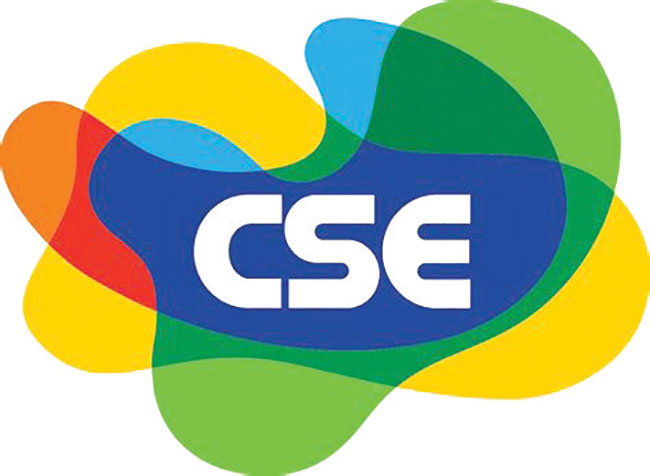
CSE trading was of a negative orientation and a low turnover level was recorded yesterday. A drop in the price of HNB shares contributed to this development in considerable measure.
HNB’s initial share price was Rs 314.75 but subsequently it dropped to Rs 305. HNB thus contributed 24 negative points to both indices.
The All Share Price Index went down by 67 points, while the S and P SL20 declined by 19.4 points. Turnover stood at Rs 1.66 billion with six crossings.
Those crossings were reported in Lankem Ceylon where 1 million shares crossed to the tune of Rs 85 million; its shares traded at Rs 85, Commercial Bank 500,000 shares crossed to the tune of Rs 74 million; its shares sold at Rs 148, Richard Peiris 2.6 million shares crossed for Rs 68.9 million; its shares traded at Rs 26, Agarapathana Plantations 4 million shares crossed to the tune of Rs 52.4 million; its shares traded at Rs 13.10, Hemas Holdings 200,000 shares crossed for Rs 24 million; its shares traded at Rs 120 and JKH 1 million shares crossed to the tune of Rs 20.3 million; its shares traded at Rs 20.3.
In the retail market top six companies that mainly contributed to the turnover were; Sampath Bank Rs 183 million (1.5 million shares traded), JKH Rs 172 million (8.5 million shares traded), Commercial Bank Rs 138 million (931,000 shares traded), HNB Rs 122 million (403,000 shares traded), TJ Lanka Rs 57.4 million (1.1 million shares traded) and Commercial Credit Rs 33.3 million (593,000 shares traded). During the day 52.9 million share volumes changed hands in 11112 transactions.
It is said that the banking sector counter was the main contributor to the turnover followed by the manufacturing sector, especially JKH. The plantations sector counters were also a bit active especially with Agarapathana Plantations featuring.
The rupee was quoted at Rs 296.30/40 to the US dollar in the spot market, stronger from 296.35/45 on the previous day, dealers said, while bond yields were up steeply.
A bond maturing on 15.09.2027 was quoted at 9.55/65 percent, up from 9.47/50 percent. A bond maturing on 15.03.2028 was quoted at 9.97/10.05 percent. A bond maturing on 15.12.2028 was quoted at 10.20/30 percent. A bond maturing on 15.09.2029 was quoted at 10.35/45 percent, up from 10.30/35 percent. A bond maturing on 15.12.2032 was quoted at 10.75/85 percent, down from 10.75/90 percent.
The Central Bank was quoting a rate of Rs 292.0669 for buying and Rs 300.5806 for selling for US dollar telegraphic transfers; a rate of Rs 313.3986 for buying and Rs 326.1557 for selling for Euro; Rs 376.5107 buying and Rs 390.7131 selling for the British pound and Rs 1.9269 buying and Rs 2.0037 selling for the Japanese yen.
By Hiran H.Senewiratne
Business
British Council Sri Lanka marks Commonwealth Day by hosting latest cohort of returning Commonwealth and Chevening Scholars from Sri Lanka
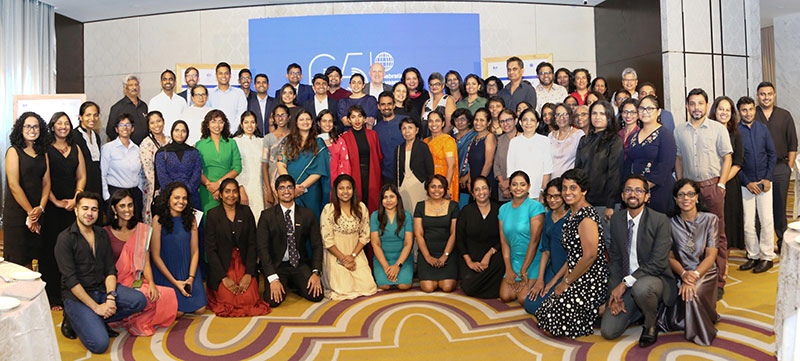
The British Council in Sri Lanka hosted its annual networking event to welcome home the latest batch of Sri Lanka’s Commonwealth and Chevening Scholars returning from the UK on completion of their studies.
This year’s event, organized together with the British High Commission Colombo, was also the 65th anniversary of the Commonwealth Scholarships, and took place on Commonwealth Day—the first-ever “Welcome Home” event that celebrated both Commonwealth and Chevening Scholars. The scholarships enable outstanding emerging leaders from all over the world to pursue advance studies in the UK.
HE Andrew Patrick, British High Commissioner, Orlando Edwards, Country Director of British Council Sri Lanka, and Philip Everest, Policy Lead from the Foreign, Commonwealth & Development (FCDO) Commonwealth & Marshall Scholarship Unit, together with Commonwealth and Chevening Scholarship alumni attended.
Commonwealth Day was celebrated across 56 Commonwealth member countries on 10March under this year’s theme ‘Together We Thrive’, demonstrating how working together can build a future defined by opportunity and resilience. During his Commonwealth Day Message, His Majesty The King, Head of the Commonwealth stated, “The Commonwealth’s ability to bring together people from all over the world has stood the test of time and remains as ever-important today.
-
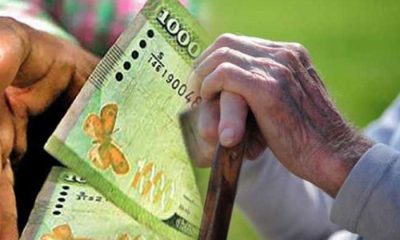
 News7 days ago
News7 days agoSeniors welcome three percent increase in deposit rates
-

 Features7 days ago
Features7 days agoThe US, Israel, Palestine, and Mahmoud Khalil
-

 News7 days ago
News7 days agoScholarships for children of estate workers now open
-

 Foreign News5 days ago
Foreign News5 days agoBuddhism’s holiest site erupts in protests over Hindu ‘control’ of shrine
-

 News7 days ago
News7 days agoJapanese Defence Delegation visits Pathfinder
-

 Features4 days ago
Features4 days agoCelebrating 25 Years of Excellence: The Silver Jubilee of SLIIT – PART I
-

 Editorial6 days ago
Editorial6 days agoWhen tractors become cars!
-

 Business2 days ago
Business2 days agoAIA Higher Education Scholarships Programme celebrating 30-year journey











